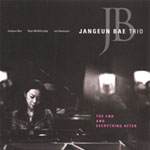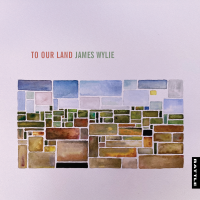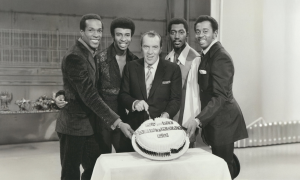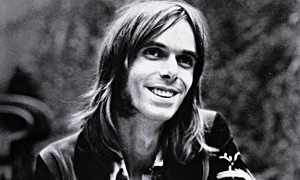Home » Jazz Articles » Film Review » Weather Report: Live at Montreux 1976
Weather Report: Live at Montreux 1976
 Weather Report
Weather ReportLive at Montreux 1976
Eagle Eye Media
2007
When '70s fusion group Weather Report played the Montreux Festival in 1976, it was on the cusp of the wider popularity it would receive the following year with the release of its best-selling album Heavy Weather (Legacy, 1977). From then on the group would adopt a grander, larger-than-life rock aesthetic in performance that included a massive sound system, sophisticated light show, smoke on the stage...all the trappings. Live at Montreux 1976 is, for that reason, all the more special when compared to the 1978 concert DVD included with the box set Forecast: Tomorrow (Legacy, 2006). While Weather Report would never lose sight of the music, here it's all about the playing.
It's also notable because of the opportunity it offers to catch the young legend-in-the-making bassist Jaco Pastorius before illness, substance abuse and a massive ego would catch up to the gifted musician and lead inevitably to his tragic 1987 death. A musician who had introduced himself to Weather Report co-founder/ keyboardist Joe Zawinul with the words, "My name is John Francis Pastorius III and I'm the greatest bassist in the world," Pastorius was already registering high on the self-confidence scale, but here he's focused primarily on the music. The Montreux show came only two months after the bassist-prodigy first began gigging with the group, and there are times when he looks uncomfortable on the stage—introspective, even.
That said, you'd never know it listening to him. His staggering exercise in bass harmonics, "Portrait of Tracy," was recorded but not yet released on his eponymous solo debut that would be released later that year, and so to a crowd not tracking behind-the-scenes changes in personnel it was a clear sign that someone new and significant had arrived on Weather Report's doorstep.
Originally aired on European television in edited form, the 84-minute concert has for the first time been made available in its entirety, remastered and with PCM Stereo, Dolby 5.1 surround and DTS Digital surround sound mixes. It's the same group that would record Heavy Weather—Zawinul, Pastorius, co- founder/saxophonist Wayne Shorter, drummer Alex Acuña and percussionist Manolo Badrena—but, at this point, the focus of the show is primarily on material from Black Market (Legacy, 1976), with all but two tracks played here in extended form.
Along with Pastorius's solo, there's a percussion/drums duo that would ultimately surface on Heavy Weather as "Rumba Mama," and a sax/piano duet that demonstrates how, while Zawinul's focus was on electric keyboards and synthesizer orchestrations, he'd lost none of his touch on the acoustic instrument (which he'd used briefly on "Birdland," the song that was soon to propel the group to its greatest fame).
While the playing is extended, the group is also sparer than it would be in subsequent years. The ethnic- drenched "Badia," from Tale Spinnin' (Legacy, 1975) and atmospheric "Scarlet Woman," from Mysterious Traveler (Legacy, 1974), are both revamped for live performance, but the playing is more focused, with "Badia," in particular, remaining closer to the album's arrangement while taking full advantage of Pastorius' lyrical side.
That's not to say there isn't plenty of extended improvisation. In contrast to later shows, where use of pre- recorded tapes and a light show dictated more structure, there's a greater sense of a group that's out there going for it. In the set closer, "Gibraltar," Pastorius references the bass line to "River People," which wouldn't surface again until Mr. Gone (Legacy, 1978). There's also a greater sense that the musicians are listening to each other—reacting and interacting.
If there's a showman to be found it's Badrena. Animated, mischievous and playful, he provides a visual focus for the filming. But it's clear music matters first and foremost, and everyone is in top form. Shorter plays with an extroversion and virtuosity that would gradually elude him in his later years with the group, causing some to suggest that he was the titular Mr. Gone. Pastorius straddles the fence between melodic foil and rhythmic anchor. Acuna, who started as percussionist with the group, proves to be a powerhouse drummer.

L:R: Joe Zawinul, Wayne Shorter, Manolo Badrena, Jaco Pastorius, Alex Acuña
As much as everyone brought something to the ensemble sound, it's Zawinul who elevated the group most through his remarkable use of analogue synthesizers to create vivid orchestration. It should be no surprise that, thirty years later, arranger Vince Mendoza would take Zawinul's original synth arrangements as a direct source for his big band scores on Zawinul's revisiting of the Weather Report repertoire, Brown Street (Heads Up, 2007).
In many ways, once the group achieved widespread commercial success with Heavy Weather, it would never be quite the same. Live at Montreux 1976 captures the ensemble at a pivotal point. Poised for its leap into popular acclaim but still unequivocally committed to improvisation, with no interest in making a performance anything more than a creative and energized aural experience, the band that for many epitomized "fusion" music at its best may receive its most representative and enduring documentation on this DVD.
Tracks: Elegant People; Scarlet Woman; Barbary Coast; Portrait of Tracy; Cannon Ball; Black Market; Drum and Percussion Duet; Piano and Saxophone Duet; Dr. Honoris Causa/Directions; Badia; Gibraltar
Personnel: Joe Zawinul: piano, keyboards; Wayne Shorter: tenor and soprano saxophones; Jaco Pastorius: bass; Alex Acuña: drums; Manolo Badrena: congas, percussion, voice.
Feature: Approximate running time 84 minutes. Aspect ratio: 4:3 (Full Screen).
Photo Credit
Captured from Live at Montreux 1976, courtesy of Eagle Eye Media
Tags
About Weather Report
Instrument: Band / ensemble / orchestra
PREVIOUS / NEXT
Support All About Jazz
 All About Jazz has been a pillar of jazz since 1995, championing it as an art form and, more importantly, supporting the musicians who make it. Our enduring commitment has made "AAJ" one of the most culturally important websites of its kind, read by hundreds of thousands of fans, musicians and industry figures every month.
All About Jazz has been a pillar of jazz since 1995, championing it as an art form and, more importantly, supporting the musicians who make it. Our enduring commitment has made "AAJ" one of the most culturally important websites of its kind, read by hundreds of thousands of fans, musicians and industry figures every month.

























